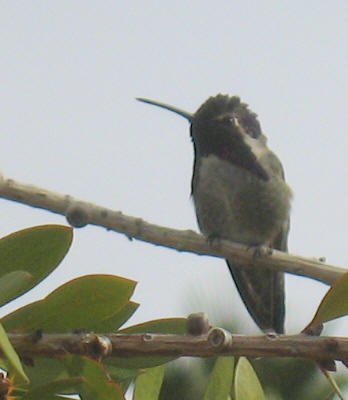Attracting Hummingbirds
 |
 |
| Attracting Hummingbirds to the Garden |
|
| Hummingbirds, tiny jewels of the bird world, are intriguing and
beautiful creatures. They have the highest metabolic rate of any
animal with a heart rate of over 1,000 beats per minute and, when
hovering, their wings may flap 15-20 times per second (they are
also the only bird that can fly backwards!). In order to maintain
this immense output of energy they must consume more than double
their own weight in nectar each day. In fact, in order to survive
the night without feeding they slow their metabolic rate to a near
hibernation state and lower their heart rate to around 100 beats a
minute. Gardeners can help supply food sources for these remarkable little birds by providing a hummingbird feeder ( see nectar recipe below ) and by planting flowers that offer nectar. Hummingbirds feed through their long beak so are attracted to flowers that are funnel shaped. The color red is also an attractant. Perennials that attract hummingbirds: · Columbine (Aquilegia) · Beebalm (Monarda) · Beardtongue (Penstemon) · Cardinal Flower (Lobelia) · Trumpet Vine (Campsis) · Honeysuckle Vine (Lonicera) · Foxglove (Digitalis) · Coralbells (Heuchera) · Catmint (Nepeta) · Hosta Annuals: · Petunia · Fuchsia · Million Bells · Morning Glory · Cardinal Vine · Four O Clocks Hummingbird Feeder Mix: Mix one cup of White Granulated Sugar (no honey, brown sugar or artificial sweeteners!) with four cups of water. Boil the mixture and cool to room temperature. Red dye is not necessary as most feeders will have red color on the feeding area to attract the birds. Place the feeder in the shade so that the nectar mixture remains cool and doesn’t spoil as rapidly. Replace the mixture every couple of days during warm weather to minimize the growth of bacteria. |
|

